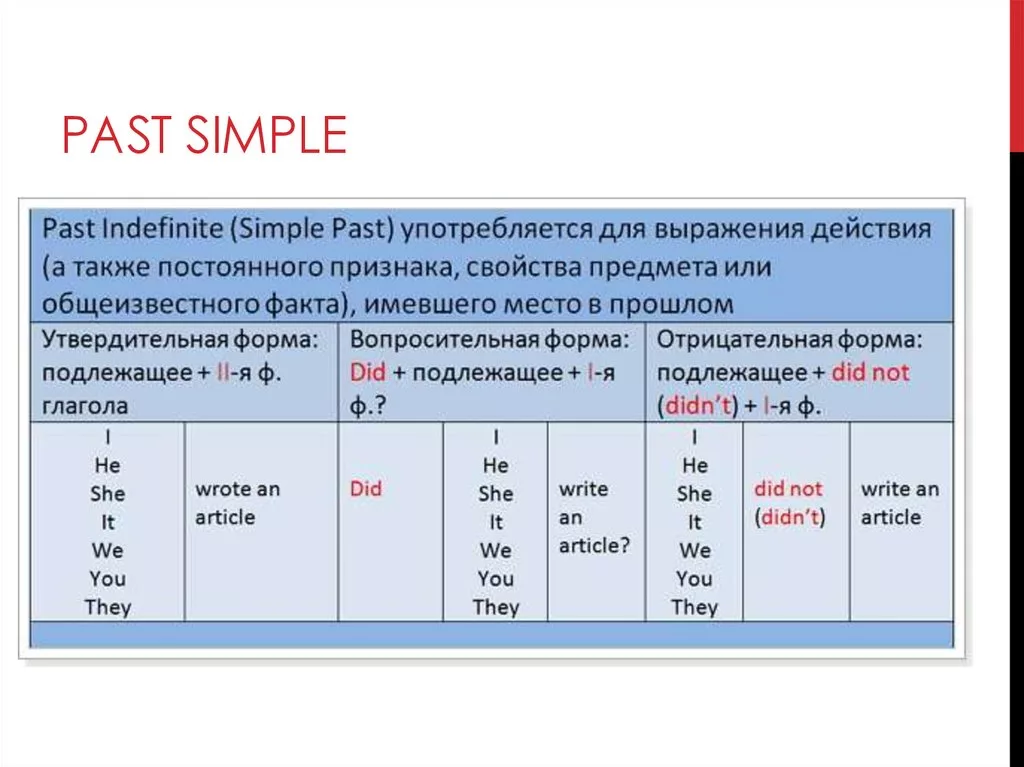What are the structures for affirmative, interrogative, and negative forms of the past simple tense in English?

Understand the Problem
The question relates to the structure of past simple tense in English. It provides information about affirmative, interrogative, and negative forms of the tense.
Answer
Affirmative: Subject + past verb; Negative: Subject + didn't + base verb; Interrogative: Did + subject + base verb.
The structures for the past simple tense are:
- Affirmative: Subject + Verb in past form (e.g., 'He wrote an article').
- Negative: Subject + did not (didn't) + base form of the verb (e.g., 'He did not write an article').
- Interrogative: Did + Subject + base form of the verb (e.g., 'Did he write an article?').
Answer for screen readers
The structures for the past simple tense are:
- Affirmative: Subject + Verb in past form (e.g., 'He wrote an article').
- Negative: Subject + did not (didn't) + base form of the verb (e.g., 'He did not write an article').
- Interrogative: Did + Subject + base form of the verb (e.g., 'Did he write an article?').
More Information
The past simple tense is used for actions completed in the past. For regular verbs, add '-ed' to the base form. Irregular verbs have unique past tense forms.
Tips
A common mistake is using the past form of the verb in negative and interrogative structures. Remember to use the base form with 'did'.
Sources
- Simple past tense | EF United States - ef.edu
- The Past Simple Tense - English Grammar Rules - Ginger Software - gingersoftware.com
- Simple Past Tense | Examples & Exercises - Scribbr - scribbr.com
AI-generated content may contain errors. Please verify critical information